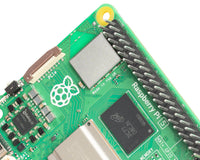Raspberry Pi Roundup - 7th October 2016
Some really excellent projects to show you this issue!
Sunrise

Florian has trouble waking up in the mornings. So much so that he decided to create himself a ‘sunrise clock’, but not just any sunrise clock! This one measures almost two metres tall and is a full multimedia experience. It uses 288 RGB bright LEDs, which are individually addressable, placed in a wide PVC plumbing pipe. Also inside the pipe are various speakers, an amplifier and, of course, a Raspberry Pi (this one’s a version 2). There’s a persistence of vision time display in addition to the sunrise effect and sounds are played through a USB dongle to get better sound than the Pi alone can generate. The software is written entirely in Python and the output is controlled via a series of ‘theme’ folders which contain the light pattern configuration and sounds to be played. He has, of course, also written a ‘party’ theme which flashes the lights in patterns and plays dance music. This two year project is covered extensively on his blog and you can see a demo of many of the themes below.
Earthquakes

Martin O’Hanlon is a Minecraft programming guru and he’s come up with a great method of using a micro:bit to generate earthquakes inside Minecraft: Pi Edition. You hook one of your micro:bit’s pins up to a GPIO pin on the Raspberry Pi and then write some simple Python script to cause movement of the player, which makes it look like the whole of the Minecraft world is moving! You can read Martin’s tutorial here and download a worksheet here.
Timelapse Rig

Spencer Organ recently spoke at CamJam about his timelapse video rig (pictured above). It uses an Arduino in combination with the Raspberry Pi (and it’s associated camera module) to pan across a landscape, taking photographs every so often as defined by the software. A servo is used to control the pan and a keypad is used to input parameters via a menu system displayed on a Nokia 5110 screen. A 16×2 LCD display completes the picture.
The MagPi have now published their tutorial article (from issue 49) and you can find that here. A video of Spencer’s talk is below and you can find the code for the system here. Spencer has written about the project on his own blog, too.





